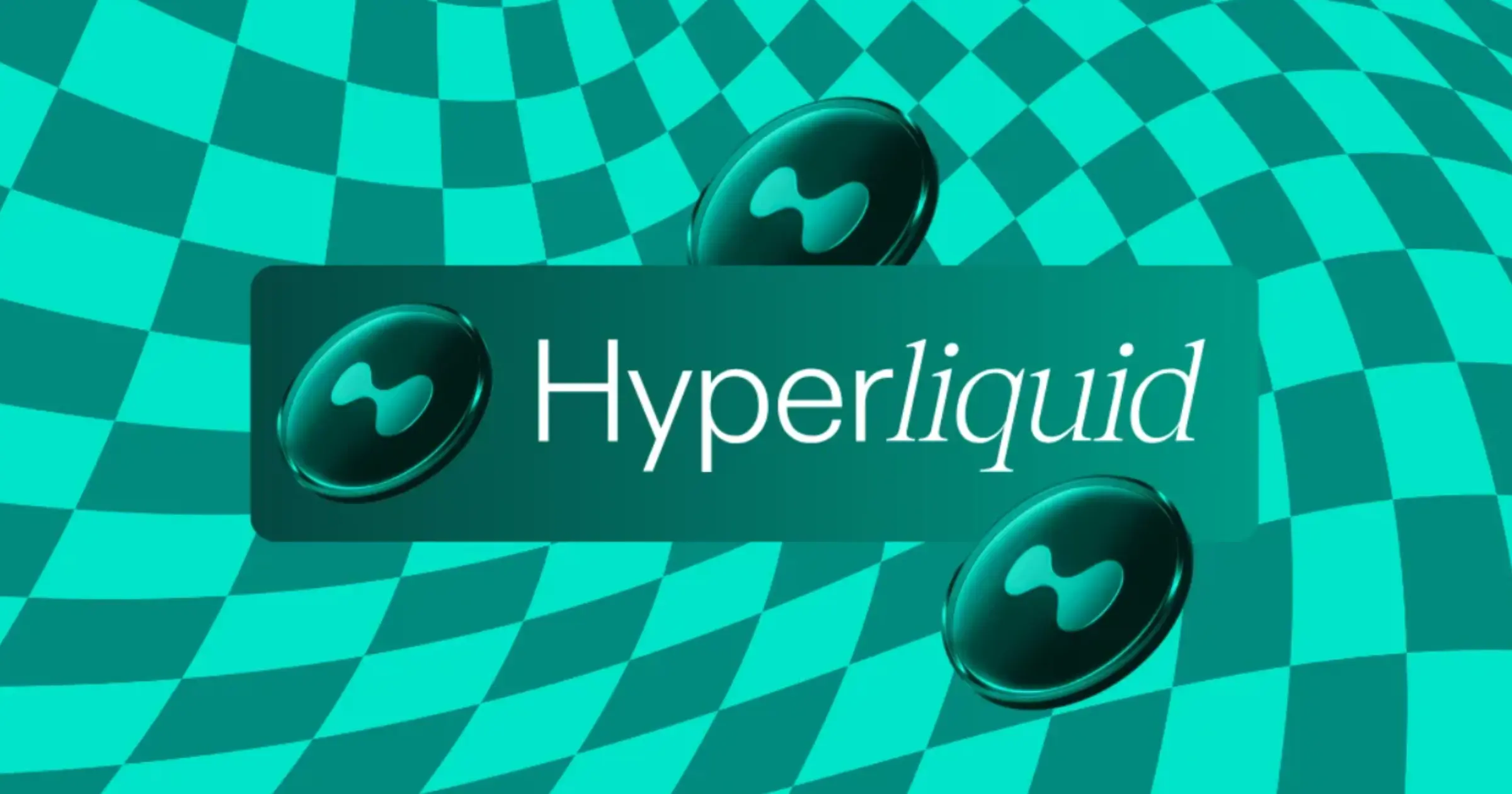In-depth evaluation of HyperLiquid's ecological DeFi protocol, who is the best solution for your "after-sleep income"?
Originally written by SMooTH
Compiled by Odaily Planet Daily Golem (@web3_golem).

Truth be told, no one enters the crypto industry just to silently stare at the balance in the wallet, we all want the wallet balance to grow, and one of the lower risk ways is through DeFi. On HyperLiquid, DeFi is very different.
Want to grow your money? Want to take out a revolving loan? Want to stake? Want to borrow with your principal and stake it while earning points? If you want, welcome to experience the true engine of DeFi on HyperLiquid: yield protocols, lending platforms, liquid staking layers, and automated vaults.
They may not be the coolest apps, but that's where your bankroll can really grow in value – whether it's while you're sleeping, trading, or posting on Twitter.
Some of these protocols have been around since the inception of HyperEVM, and some have only just been launched. All of these protocols are built in the rapidly evolving HyperEVM-native environment, which will have a profound impact on the development of DeFi on HyperLiquid.
This article provides a comprehensive analysis of these protocols based on utility, popularity, and relevance to help you find areas worth investing in and focusing on. (Ratings are based on a combination of factors such as potential, relevance, transaction volume, user awareness, and overall ecosystem impact).
S-rated yield/lending protocol
These are the foundational layers of DeFi on Hyperliquid – widely used, well-integrated, and shaping the way capital flows through the ecosystem. Whether it's lending, staking, or automated vaults, these protocols are essential for anyone farming, borrowing, or deploying liquidity at scale.
Hyperlend: Real-time leveraged lending
Hyperlend allows users to offer or borrow assets such as HYPE, with interest rates automatically adjusted based on demand. It also unlocks dynamic leveraged positions, providing traders with speed and flexibility across HL native assets.
Timeswap: Fixed-term lending without oracles
Timeswap allows users to borrow and borrow for a fixed term, with no oracles and no price information required. Anyone can create a marketplace for any ERC-20 token, which makes it one of the most innovative designs in the lending space.
Felix Protocol: Borrowing feUSD using crypto collateral
Felix allows users to mint feUSD using assets such as HYPE, ETH, or BTC. With margin strategies, stable pools, and trader-friendly mechanisms, it's a fast-growing lending layer with a strong TVL.
Morpho: Customizable lending services for DeFi professionals
Morpho is a lending protocol known for its combination of peer-to-peer and pool-based strategies, which allows users to fine-tune risk and reward in select markets. With over $4 billion in TVL and non-profit structures, Morpho is a security-focused, developer-friendly platform designed to provide flexibility.
stHYPE: Liquid staking of HYPE
stHYPE allows users to stake while using HYPE in DeFi. Staked tokens accumulate rewards in real-time, support fast unstaking, and are staked at a 1:1 ratio, making it one of the most widely used staking tiers on HL.
Class A income/lending agreement
This category includes platforms with great potential, strong mechanics, and bright promises, some of which are relatively new, some of which are still expanding—but the core elements of all platforms are in place. With a little nudge or time, they can easily rise to the top.
HypurrFi: Uses leveraged lending and stablecoins as an engine
HypurrFi allows users to rally execute yield strategies using HYPE, stHYPE, or stablecoins, and borrow against USDXL, an RWA-backed stablecoin. With built-in risk management and options-based strategies, it's one of the more complex lending layers in HL.
Hyperbeat: One-click DeFi yield vault
Hyperbeat offers automated vaults that find the best path to yield in the HL ecosystem. It supports HYPE, ETH, stablecoins, and has a points program tied to its BEAT token, making it a convenient entry point for passive miners.
Kinetiq: A liquid staking protocol with validator routing
Kinetiq issued kHYPE for liquid staking and routed through an auto-optimized validator hub. With the launch of the institutional version (iHYPE) and the establishment of an audit mechanism, it aims to expand the staking scale of retail investors and professionals.
Class B Yield/Loan Agreement
These are legit protocols that are already live, fully functional, and quietly building real traction. However, these protocols have low adoption and visibility, or key features are still being rolled out. As their potential is realized, it is worth paying attention to.
LoopedHYPE: Revolving HYPE for higher yields
LoopedHYPE automates the yield cycle of staking HYPE, converting it into LHYPE – a token that you can use in DeFi and continue to make a profit. Smart loops, community rewards, and ecosystem reinvestment give it its unique charm.
Hyperpie: Liquid staking, meme launchpad, and DEX
Hyperpie combines a liquid staking and meme token DEX, as well as a meme launchpad, and these three features are combined into a fun and powerful DeFi suite. Users can stake HYPE, publish or trade memes, and govern them through "ve-style voting", which is a full-stack meme economy.
Liminal: Earn passive income through delta-neutral mining
Liminal automates a delta-neutral strategy that derives income from the funding rate and provides market-neutral returns for USDC deposits. No lock-ups, no repricing tokens, just passive income, and track performance in real-time.
Hyperdrive: A stablecoin-centric funding market
Hyperdrive helps users earn yield with stablecoins, borrow and lend with stablecoins, and even stake HYPE, all from a single dashboard. It also supports a simplified yield strategy and DeFi stacking utilization of HLP.
D2 Finance: On-chain derivatives vault
D2 tokenizes advanced derivatives strategies into tradable positions. With an institutional background, full transparency, and a focus on risk-adjusted returns, it offers an on-chain experience similar to that of a hedge fund.
Napier Labs: Fixed income markets and tokenized interest rates
Napier makes it possible to lock in fixed income and trade tokenized interest. Its modular design allows for custom yield products and integrates with Curve to maximize liquidity. It's like a fixed income DeFi, but composable, built for builders.
No ranking/borrowing protocols
These platforms are either not yet released, are still in testing, or lack usage data, making it impossible to rank reliably. Are there any prospects for these agreements? Of course. But until we see them actually running live, they are still in an unrated state.
Altitude: A mortgage agreement that generates yield
Altitude converts users' loan collateral into income-generating assets. These assets do not sit idle, but gradually reduce the user's debt through the automatic rebalancing feature. It's an excellent option for users who want to borrow efficiently and don't want to micromanage it frequently.
HyperYield: Native lending and yield layer
HyperYield focuses on HL-native fast lending and auto-compounding strategies. With instant liquidity, low fees, and a DeFi-first interface, it aims to be the default yield tier for HyperEVM.
Keiko Finance: Borrow KEI and earn rewards
Keiko allows users to mint KEI stablecoins by locking up crypto collateral and then using KEI in DeFi. It has a built-in liquidity incentive mechanism and a rolling points system that rewards borrowers and liquidity providers (LPs).
Harmonix Finance: Traditional Finance (TradFi)-style DeFi vault
Harmonix runs automated vaults using strategies inspired by hedge funds, such as options roulette and delta-neutral mining. With fixed or floating annualized returns and full transparency, it's a great choice for investors looking for risk-adjusted returns.
HyperFlash: MEV-based staking (coming soon)
HyperFlash promises to provide higher staking rewards through a MEV-based extraction mechanism. It is still under development, and it aims to increase the yield of HL staking users by up to 22%.
Growi.HF: Automated quantitative investing in DeFi
Growi uses algorithmic trading strategies to help users earn passive income while reducing market risk. It's similar to DeFi's robo-advisor and is ideal for "lying flat" users who are looking for real returns and aren't willing to chase tokens or points.
